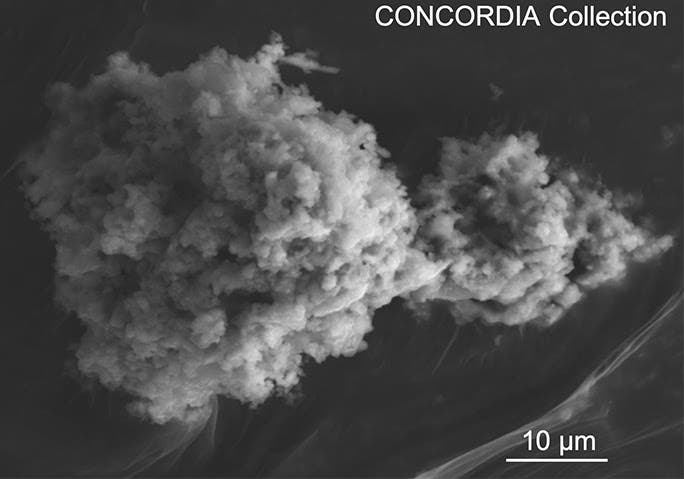
While menacing asteroids occupy the public’s imagination when it comes to extraterrestrial impacts, the reality is that planet Earth is bombarded on a daily basis — it’s just that these cosmic projectiles are so tiny we barely notice them. When we do notice them, it’s because they light up the sky in a beautiful meteor shower. Now, scientists have quantified exactly how much extraterrestrial matter hits the planet’s atmosphere.
For nearly 20 years, researchers at the French National Center for Scientific Research (CNRS), the Université Paris-Saclay, and the National Museum of Natural History in France, have been collecting and analyzing micrometeorites. In a study due to be published on April 15 in the journal Earth & Planetary Science Letters, they concluded that nearly 5,200 tons of these micrometeorites reach the ground.
The few micrometeorites that survive atmospheric entry can fall anywhere on Earth. However, it is damned near impossible to tell them apart from normal, terrestrial dust and soil — unless you’re in Antarctica.
The Franco-Italian Concordia station (Dome C), located about 1,100 kilometers off the coast of Adélie Land in the heart of Antarctica, is virtually devoid of terrestrial dust. So researchers know that any dust they find in the snow has a good chance of being of extraterrestrial origin.
Over the last two decades, six expeditions have collected countless micrometeorite samples, ranging in size from 30 to 200 micrometers — so small they’re invisible to the naked eye.

Based on these samples, the researchers first calculated the annual flux of mass accreted on the surface per square meter per year. For the entire planet’s surface, the annual flux of micrometeorites amounts to 5,200 tons per year.
For comparison, the annual flux of larger objects such as meteorites, which typically range between the size of a pebble and a fist, is less than ten tons per year.
The researchers also performed a statistical analysis that showed that 80% of the meteorites come from comets, while the rest from asteroids. While asteroids consist of metals and rocky material, comets are made up of ice, dust, rocky materials, and organic compounds.
In the future, astrophysicists can use this information to model the formation of young Earth, which was greatly influenced by the amount of available interplanetary dust particles.






